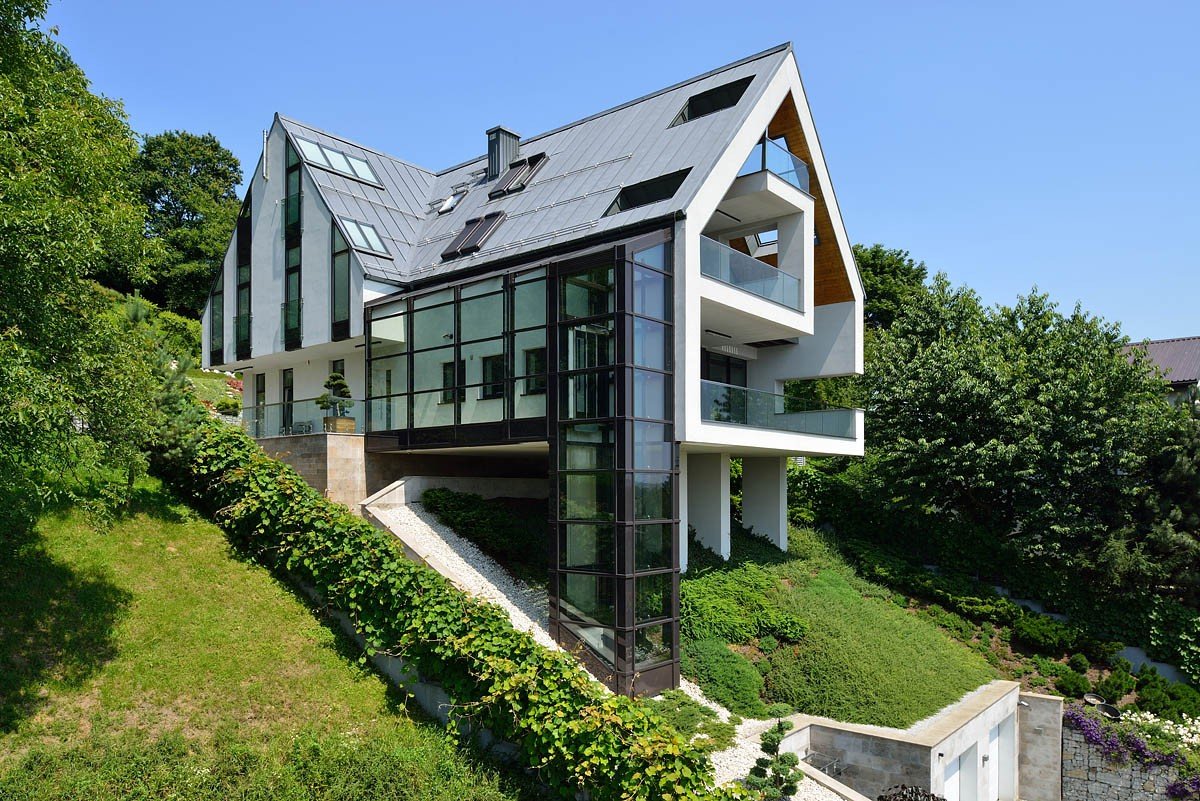#7695. Gabled Contrast Facade: Modern Hillside House with Vertical Glazing
Before us stands a contemporary residential house seamlessly integrated into a hilly landscape. The architectural solution of the facade demonstrates an impressive balance between geometric rigor and dynamic asymmetry. The building's main form represents a reinterpretation of the traditional gabled roof, giving the silhouette a sense of familiarity while appearing absolutely modern thanks to its minimalist execution.
The facade is distinguished by a contrasting combination of materials: extensive glazing with black frames creates visual lightness, while white monolithic walls form a clear geometric volume. Particularly impressive is the central part with continuous vertical glazing that seemingly cuts through the building and connects different levels. This glass vertical serves not only as an aesthetic element but also as a functional one, providing natural lighting to the interior spaces.
Terraces with glass railings at different levels create a cascading effect, visually softening the monumentality of the building. The architect masterfully utilized the site's topography, integrating the structure into the slope in such a way that the lower level appears to emerge from the earth. The landscaping of the slope and the integration of the house into its natural surroundings demonstrate an eco-conscious approach to design.
The metal roofing with clean lines emphasizes the geometric purity of the form, while wooden accents in the upper part of the facade add warmth and naturalness to the overall composition. Such a combination of materials reflects the contemporary tendency to create architecture that engages in dialogue with its natural environment rather than dominating it.
